Play Strategy: Play Out of Hours!
A toolkit for the use of school grounds for playing out of teaching hours.
Part 1: Issues to be considered
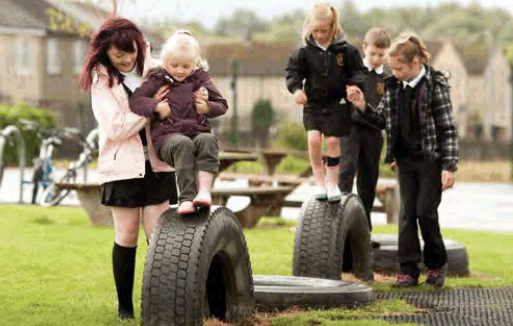
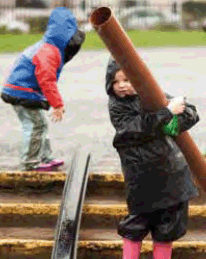
Section 1.1
The importance of play
Playing is central to children’s physical, mental, social and emotional health and wellbeingiii and is enshrined in the United Nations Convention on the Rights of the Child (UNCRC).
Through play, children develop resilience and flexibility, contributing to physical and emotional wellbeing. For children themselves, playing is one of the most important aspects of their lives.iv
Schools often offer ideal space for children to play and interact with one another. It is important to develop a strong play element in order to provide a healthy school environment.
Quality play provision offers all children the opportunity to freely interact with or experience the following:
Other children – of different ages and abilities with a choice to play alone or with others, to negotiate, co-operate, fall out, and resolve conflict.
The natural world – weather, trees, plants, insects,
animals, mud.
Loose parts – natural and man-made materials that can be manipulated, moved and adapted, built and demolished.
The four elements – earth, air, fire and water.
Challenge and uncertainty – graduated opportunities for risk taking; both on a physical and emotional level.
Changing identity – role-play and dressing up.
Movement – running, jumping, climbing,
balancing, rolling, swinging, sliding and spinning.
Rough and tumble – play fighting.
The senses – sounds, tastes, textures, smells
and sights.
Section 1.2 Benefits
Throughout Scotland many school grounds offer a significant resource for children’s play. School grounds often represent the only area of open space where children can play within their local community. Likewise, some schools offer the only flat surface locally where children learn to ride bikes and play with their scooters and skateboards.
In many areas, both urban and rural, school grounds offer neutral space in the local community. Having access to such a space can enhance the opportunities that all parts of the community around the school have for outdoor recreation and play.
Children and young people generally make more use of the outdoors and spend more time outside than adults, so, the positive effect of access to school grounds for them is potentially even higher than it might be for adults.
Both schools and communities can be enriched when they engage with each other more fully. Head teachers report that when schools engage with their local community it has a direct impact on pupils’ attainment and raises their aspirations to progress from school to further education, training and employment.
The benefits of using school grounds for playing include:
- Increased pupil motivation and self-esteem
- Opportunities which prevent young people progressing to greater levels of risk
- Additional facilities and opportunities
- Enhanced partnership working with the community
- Reduced pupil disaffection
- Improvements in child behaviour and social skills
- Improved local availability of play opportunities
- Better opportunities for children outside school hourss
- Helping to regenerate and strengthen communities
- Improved collaboration with other agencies to promote better community safety. v
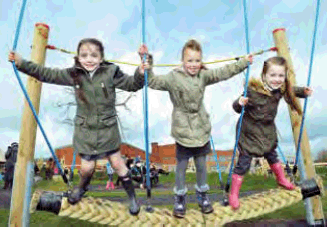
Section 1.3
Concerns
From the outset it should be acknowledged that providing play opportunities within school grounds can be a challenge. Some schools and some communities may encounter more challenges than others. Every school is individual, and is ideally placed to be sensitive to the needs of its particular community.
From the outset, it should be recognised that there are common limitations that must be overcome when school facilities are used for activities other than the primary function of educating pupils. In general they are:
- Basic layout and usefulness of the facility
- Maintenance and operation costs
- Resistance from the educational, and wider, community.
The following sections provide an overview of possible solutions and case studies to challenges and concerns that may be identified by schools regarding the out of teaching hours use of school grounds.
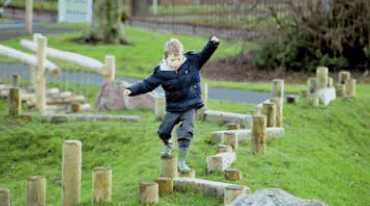
Case study 1:
St Monica’s Primary School, North Lanarkshire
St Monica’s Primary School in the North Lanarkshire Council area has become their first school to install a natural playground which has school access only during the school day and community access outside school hours. The grounds are large and comprise a tarmac area to the front of the school and a large gently sloping grass area to the rear. The grounds also include a grass football pitch and various raised planted beds. Until this project, the entire grounds were closed off at the end of the school day.
A CultureNL spokesperson said, “Allowing unlimited access to the community out of school hours is a new arrangement, mainly due to the fact that the grounds represent the only recreational space in that community. This is a shared responsibility with the school staff and the council’s Land Management service. Mostly, the school grounds have been used with respect. Children and young people who live in the community come and play out with the school day and at weekends and we have not had issues with anti-social behavior or vandalism within the school grounds. It was a fine balancing act to develop a space which functions as a school playground and outdoor learning space as well as a community play area but we feel this site successfully combines these elements.
The school has recently purchased a fire bowl for use within school hours only. The school is also currently experimenting with various loose parts during the school day, and the use of loose parts within the play area by the wider community is something which has been discussed and may be explored further in the future.
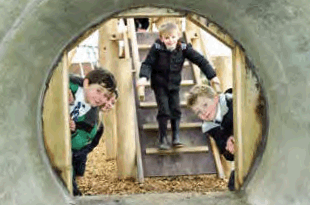
Section 1.4
Unlocking the gates
Whether the school gates need to be locked or not will depend greatly on the local situation at the school. Rather than questioning whether or not the gates are locked, it may be more useful to consider when they are locked and who locks them.
Even in places where school gates really do need to be closed after teaching hours, there is often a period of time before teaching begins in the morning and after teaching time in the afternoon where access could be allowed. In some places, an option may be to engage with a local group, for example the Parent-Teacher Association (PTA) or local Tenants Association to develop a community agreement which would allow schools to only lock their gates at a specified time.
It may also be possible for some schools to consider dual entry systems. For example, an enclosed hard surface area for ball games and wheeled play built into the outer boundary of the school site with an entrance on the school side and one on the community side. This provides an area for school use and for out of teaching hours use that does
not involve having to leave the main gates open.
Case study 2:
Cramond Primary School, Edinburgh
Cramond Primary is a non-denominational school built in 1975. The school serves the village of Cramond and the surrounding areas of northwest Edinburgh. They are part of the Royal High School cluster. The school roll is over 400 pupils. They have a custom built nursery on site with places for 50 pupils in morning and 50 afternoon places. The school building was extensively upgraded and extended in 1999 and then again recently in 2006.
The grounds are extensive, comprising a split level playground, both a nursery and wildlife garden along with an eco-garden area, with a story telling bench, tiered seating and stage, a pond and orchard. The grounds support a variety of habitats. Parent fundraising has long supported playground improvement at Cramond along with community grants. Extensive natural play facilities were installed in 2014 to transform muddy, grass slopes into challenging, fun, play areas. They now have the use of various surface materials from sand, to gravel to tyre walls. They have a tunnel, wild grass and rocky climbs along with a wooden Roman Galleon housing a rope bridge walk way and sunken sand pit. They have a large loose parts construction area to compliment the existing trim trail and football pitch, and we have a giant slide. As the gathering space inside the school (main hall) is so small – they love their ‘ampitheatre’ to play on, perform on and hold outdoor assemblies. The P7 leavers ceremony (and party) was held in Our Place. They have outdoor speakers too!
Head teacher Helen Donaldson said, “Since we developed the area from a pretty uninspiring site, to a
play promoting area for all our pupils, we have actively encouraged the local community to access the site after school hours. Though the community always had access, the playground is now far more appealing for everyone. Sports Lottery funding was used to install large equipment and to terrace our slopes in order to increase usability of the area. There have been no issues with significant vandalism or anti-social behaviour and the equipment has been treated with respect. It’s an all-weather play space – very well used after school, in evenings and the weekend. Many generations of families use the space and it lives up to our vision of ‘our place’ – a place to just play and stay active. Our children (and adults) happily spend hours here, creating, building, jumping, building, climbing, running and chilling. It has had significant impact in reducing playtime incidents and pupils come in after break times invigorated and ready to learn.
Section 1.5
Vandalism and break-ins
The causes of vandalism outside of teaching hours are often the result of a problem outside of the school boundary. Thus it follows that the issue of vandalism is a community issue that requires a community solution.
Often, the root cause of community vandalism can be attributed to poor provision for older children and teenagers in the local area. Surrounding a school in security fencing to prevent vandalism is therefore not only an expensive, oppressive and short-term solution that can make schools look uninviting and harsh, but it could also be actually contributing to the underlying cause of the vandalism.
Vandalism is more of a risk to some schools than others but for all schools there is a difference between protecting the school buildings from misuse and deliberate damage, and protecting the wider school grounds. If capital funding becomes available to substantially refurbish schools some of that funding may be used to alter the way the buildings are physically protected whilst adopting strategies and designs which still allow access to the wider grounds.
When asked, children and young people say that what they are looking for more than anything else are places to play outside, with friends after school. They are not necessarily looking for, or asking for, access to buildings.
Evidence suggests that when school grounds are used by the wider community, out of teaching hours and during holidays (even on an unsupervised basis) the risk of damage and break-ins is dramatically reduced. The children and young people who regularly use the school grounds are not the ones who vandalise it; they value the provision.
Opening school grounds for playing will immediately increase the presence of people there. Communities will value the space if it provides a place for them and the presence of people is a well-known deterrent to vandalism.
Opening school grounds can result in local communities feeling more involved in the school either by informal arrangements or by organised stewardship agreements. It follows that the potential risk of people from outside the community causing problems can also be reduced.
Allowing limited access to school grounds can be a solution. This can be achieved by opening part of the school grounds to allow public access.
Many schools already provide a varied programme of after school activities and clubs. Another way to allow limited access to school grounds is by actively promoting the use of the grounds
for freely chosen play whilst other, more structured recreational activities are taking place as part of the after school itinerary.
Case study 3:
City of Edinburgh Play Strategy December 2014
In December 2014 the Education Children and Families Committee of City of Edinburgh Council endorsed a new play strategy that incorporated Edinburgh’s Play values. Play in Edinburgh values the benefit of risk and challenge based on risk benefit assessment. It states that “Every child and young person in Edinburgh should be able to play freely and safely while learning to manage risks, and make choices about where, how and when they play according to their age, stage, ability and preference.”
The Education Children and Families Committee have clearly stated in their Policy Principles for access to primary school grounds for play out of teaching hours would be that:
- Children have access to the playground for freely chosen play (as opposed to community leasing of sports facilities or ‘pay and play’)
- A range of options are considered, depending on the individual school and community need, including: open access; access limited by time/and or space; playground access during current leasing hours; access through a stewardship agreement
- School gates are not locked as a default position, but consideration is given to whether they should be locked, when gates should be locked and by whom they are locked, and if they can be left open
- When improving school grounds for play, additional costs may be incurred and must be considered by the school community when raising funds
- Safety and risk is put into a real rather than perceived context using risk benefit assessment
Schools developing their grounds for play receive training for staff in Loose Parts Play and Dynamic Risk Benefit Assessment.
Section 1.6
Balancing risks and benefits
The Health and Safety Executive (HSE), in conjunction with the Play Safety Forum (PSF), has issued a joint high-level statement to promote a balanced approach to managing risk in children’s play.vii
Risk management in play provision involves balancing risks and benefits in a strategic way. So, it is vital for providers to have a clear, explicit policy framework for play provision that states overall service goals, that informs the approach to risk and safety, and that underpins the reasons for decisions. A policy that makes explicit the need for challenging play opportunities, with an acceptable degree of risk, will help providers resist unjustified negligence claims. A risk management policy template is included in the Tools to assist part of this toolkit.
A policy framework provides the context for making risk-benefit assessments. Risk-benefit assessment brings together an informed analysis of both risks and benefits. Managing Risk in Play Provision: Implementation Guideviii sets out a descriptive form of risk-benefit assessment that allows providers to state in writing all the relevant considerations behind a given judgment or procedure. The HSE was consulted in the production of this publication. It endorses the sensible, proportionate, reasonable and balanced advice to play providers on managing participant safety set out in the guidance.
When schools have the right equipment and materials, in the right place, with the right policies and procedures in place for inspection and maintenance, then the play provision will be as safe as is reasonable practical, which is what the law requires.
It is important to put issues of safety and risk into context. The main risk facing children and young people during a typical day is often getting to and from school and then travelling to the places where they play and socialise out of teaching hours.
Many children and young people actively seek adventurous, exciting play experiences with a degree of risk. Far from significantly increasing the risk of injury, having access to local school grounds out of learning hours can potentially contribute to keeping children safe. Providing challenging facilities can help to reduce accidents overall by offering experiences in managed environments that are safe from traffic and other serious hazards.
“We have had instances which caused concern – a bit of graffiti that was considered inappropriate for the school site. Because we have a good relationship with the Police Liasion Officer, she was able to work closely with us and another community network to help remove it.”
Children’s play and leisure – promoting a balanced approach
The HSE has worked with the Play Safety Forum to produce a joint high-level statement that gives clear messages tackling these misunderstandings. HSE fully endorses the principles in this Statement. The statement makes clear that:
- Play is important for children’s well-being and development
- When planning and providing play opportunities, the goal is not to eliminate risk, but to weigh up the risks and benefits
- Those providing play opportunities should focus on controlling the real risks, while securing or increasing the benefits – not on the paperwork
- Accidents and mistakes happen during play – but fear of litigation and prosecution has been blown out of proportion
Recognising the benefits of play
Key message: ‘Play is great for children’s well-being and development. When planning and providing play opportunities, the goal is not to eliminate risk, but to weigh up the risks and benefits. No child will learn about risk if they are wrapped in cotton wool’.
HSE fully recognises that play brings the world to life for children. It provides for an exploration and understanding of their abilities; helps them to learn and develop; and exposes them to the realities of the world in which they will live, which is a world not free from risk but rather one where risk is ever present. The opportunity for play develops a child’s risk awareness and prepares them for their future lives.
Striking the right balance between protecting children from the most serious risks and allowing them to reap the benefits of play is not always easy. It is not about eliminating risk. Nor is it about complicated methods of calculating risks or benefits. In essence, play is a safe and beneficial activity. Sensible adult judgements are all that is generally required to derive thebest benefits to children whilst ensuring that they are not exposed to unnecessary risk. In making these judgements, industry standards such as EN 1176 offer bench marks that can help.
Striking the right balance does mean:
- Weighing up risks and benefits when designing and providing play opportunities and activities
- Focussing on and controlling the most serious risks, and those that are not beneficial to the play activity or foreseeable by the user
- Recognising that the introduction of risk might form part of play opportunities and activity
- Understanding that the purpose of risk control is not the elimination of all risk, and so accepting that the possibility of even serious or life-threatening injuries cannot be eliminated, though it should be managed
- Ensuring that the benefits of play are experienced to the full
Striking the right balance does not mean:
- All risks must be eliminated or continually reduced
- Every aspect of play provision must be set out in copious paperwork as part of a misguided security blanket
- Detailed assessments aimed at high-risk play activities are used for low-risk activities
- Ignoring risks that are not beneficial or integral to the play activity, such as those introduced through poor maintenance of equipment
- Mistakes and accidents will not happen
What parents and society should expect from play providers
- Key message: ‘Those providing play opportunities should focus on controlling the real risks,while securing or increasing the benefits – not on the paperwork’.
- Play providers2 should use their own judgement and expertise as well as, where appropriate, the judgement of others, to ensure that the assessments and controls proposed are proportionate to the risks involved.
- They should communicate what these controls are, why they are necessary and so ensure everyone focuses on the important risks.
It is important that providers’ arrangements
ensure that:
- The beneficial aspects of play – and the exposure of children to a level of risk and challenge – are not unnecessarily reduced
- Assessment and judgement focuses on the real risks, not the trivial and fanciful
- Controls are proportionate and so reflect the level of risk
“Allowing community access to the grounds has actually added security for us. Parents visiting with children have alerted us to issues by sending an email, or leaving a message on the school answer phone. We have even had instances when parents have reported that their child has accidentally caused damage whilst playing, promising to rectify it.”
Section 1.7
Supervision
Although staff are responsible for the supervision of children and young people during the school day, during playtimes, break times and lunch-times, and when in supervised after school provision, this is not necessarily the case at other times of use. Where it is made clear to children and parents that provision is unsupervised and a properly made risk-benefit assessment has identified and removed hazards, then existing insurance policies can be extended to cover unsupervised use. This is how local councils gain insurance for un-staffed public playgrounds.
Partnership arrangements with other departments in the Local Authority and/or voluntary sector organisations can provide specialist support and sometimes staffing for provision. The play service within some local councils, and many local voluntary sector organisations have teams of playworkers who visit different sites during school holiday periods and early evenings in term time to promote open access use of school grounds and organise play sessions. Having staff on site for a limited time may help a school to stage its use of school grounds and may address parental and community concerns.
Unsupervised provision requires no additional staffing except for someone to lock the gates, if need requires, and partnership agreements with local groups is one way of addressing this.
Case study 4:
Aberdeen Play Forum
The Aberdeen Play Forum’s (APF) Play Rangers support the use of Loose Parts in schools at lunchtimes (5 schools in 2015) and also deliver drop-in Loose Parts sessions for families in open spaces during the holidays. Last Easter Break APF held a session in each of the three GfL schools in Aberdeen City, where parents and children enjoyed playing together in their local school grounds. Staff in settings have noted that: children play more inclusively across peer groups, ages, genders and abilities; children are more engaged, which means less squabbling; richer play also means richer learning; after play children are in happier frames of mind, having had fresh air, exercise and fun. The team is currently embarking on a new support program for schools, which aims at schools managing the loose parts independently; the kit will also be available to out-of-school clubs which also use the school.

Case study 5:
The Zone, Dalmellington
The Go2 Play team of The Zone worked with Auchinleck Primary School East Ayrshire School (roll 220) from October 2012 through to July 2014.
This school itself is situated in an area with a raft of statistics available through the Scottish Index Multiple Deprivation for 2012, with 4 data zones in Auchinleck in the 15% most deprived data zones in Scotland for Income, Employment, Health and Education; in addition:-
- Access – amongst the 23% most access deprived areas in Scotland.
- Housing – amongst the 29% most housing deprived areas in Scotland.
- Crime – amongst the 6% most crime deprived areas in Scotland.
The Zone worked with the School on a weekly basis and to encourage play in the play grounds. Staff engaged with the children and got them playing with the equipment adapting it to suit circumstances. Over the time the Zone were in the playground, they started to develop good working relationships with the playground assistants, as well as the children.
The Head Teacher noted: “After the sessions we encouraged the children to play with the equipment in freeplay sessions or take part in team games. To ensure that the children continue to play in the absence of our Go2Play team we encouraged the children to lead on play. This led to the development of mini play rangers. We worked with P5/6 children to be play rangers during break times during the rest of the week when the team were not at the school.”
“The pupils were encouraged to take ownership of playtime games and were trained by the Go2Play team to become mini play rangers, a role which the children took very seriously. This aspect also ensured sustainability.’’
The combined impact in the school has led to more fun and more active play, with children growing in confidence through their play interactions, in particular those who are mini play rangers developing confidence to instigate play for the younger less confident children.
12
Section 1.8
Legal context and litigation
Ultimately, the school is responsible for managing risks.
There is no specific legislation on play safety. The key legislation is the Health and Safety at Work Act 1974, and the Occupiers’ Liability Acts 1957 and 1984. In practice, this legislation implies a level of care for providers that is captured in the notion of ‘reasonableness’.
The Management of Health and Safety at Work Regulations 1999 impose a legal duty on providers to carry out a ‘suitable and sufficient assessment’ of the risks associated with a site or activity, to document their assessments and to act accordingly.
The Occupiers Liability Act 1957, 2004 states that it is an occupier’s duty to ‘take such care as in all the circumstances of the case is reasonable to see that the visitor will be reasonably safe in using the premises for the purposes of which he is invited … to be there’. The provisions of the Occupier’s Liability Act 1984 regulate the position in relation to people other than visitors, i.e. trespassers.
The dangers or risks with which the occupier should concern itself are those arising from the state of the premises or from things done, or omitted to be done, on them.
When applying the Act, the courts have made an important distinction between a danger arising from the state of the premises, for example an uneven path, and an accident that occurred as a result of a risky activity undertaken, even if certain features of the premises facilitated that activity.
For instance, case law indicates that ordinary features of landscape are not going to be a danger arising from the state of the premises. Premises will not be unsafe or dangerous simply because there are obvious risks, such as potentially falling from a height.
It is recognised that Local Authorities and schools have concerns about litigation, but the actual risk of successful litigation is very small.
If schools have made an adequate risk-benefit assessment and provision is appropriate, in the right place, and the right policies and procedures are in place, then successful litigation is extremely unlikely. However insurance cover exists for the rare event a successful claim is made.
Play provision, like any other provision, does present risks, to children and adults through accidents and injuries, and also to providers through the risk of liability.
However, school grounds are comparatively safe places and have been so for some years if not decades. Local Authority risk managers and insurers report that claims from playground injuries represent a very small proportion of their caseload, and there is no evidence of any dramatic increase in numbers in recent years. This pattern should follow if school grounds were made more accessible.
Recent cases appear to suggest that the courts are keen to avoid the unnecessary overprotection of children or encourage the advancement of the compensation culture.
‘When we were developing the site for use by the community out of teaching hours, there was concern that developing the space would increase the potential for claims, and increase liability. However, one of our team reminded us that the fact remained that this was always the potential, and given the lack of maintenance of the space prior to the development, the school was potentially at more risk of a claim to occur. We realised that the issues of liability and potential claims are the same, whether the space is open or locked.”
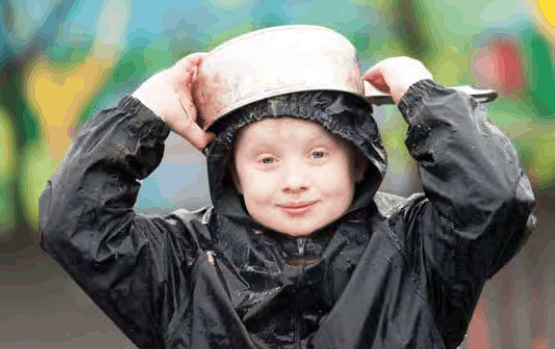

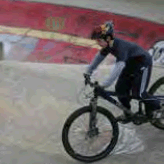
Case study 6:
Wolverhampton City Council
Wolverhampton City Council’s approach to risk is founded on the understanding that there is a balance to be struck between risk and benefit, and that it is the council’s duty to make judgments that benefit the general public.
Wolverhampton City Council is predominantly selfinsured in respect of its liability risks (it carries its own excess of £250,000). It is council policy to defend robustly any claim where it does not consider itself liable, and to settle claims quickly where it judges that it has been at fault. The majority of claims are handled internally. Generally the council’s insurers are not involved in the decision-making process.
The council developed a corporate, cross-sector play policy with the involvement of members, health and safety officers, parks, planners and the play service. Exploring attitudes to, and understanding about, risk in play formed an integral part of the process. The council recognised that a play policy alone would not be sufficient to embed a culture change. Many of those involved in delivering play opportunities tended to ‘go for safety’, and the ‘fear factor’ – about potential claims, and parental or other complaints – led to defensive practice. As a result, the risk and insurance manager and the play officer are creating a learning programme on risk and play for all staff whose decisions have an impact on play provision.
Section 1.9
Insurance
Insurance plays an important role because it provides a financial safety net in the event of accidents or other losses. However, insurance is not intended to prevent accidents or losses, and should not be the driver of risk management or service delivery.
Risk-benefit assessment should be discussed with insurers, to ensure an agreed approach and to assist both schools and insurers in containing the number of claims that are placed.
Most schools are insured via the Local Authority through a group insurance scheme. Where schools successfully open their grounds for playing, specific insurance cover has been arranged to allow community use out of teaching hours.
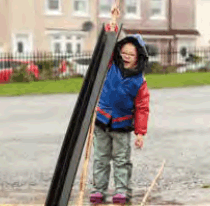

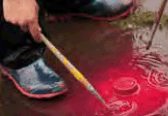
Section 1.10
Toilets
Many local play areas, playgrounds and other public open spaces where children play, do not have toilets. As many of the children using the school grounds will live locally, they have the option of going home if they really need to. Information for children and parents regarding the use of school grounds can explicitly state the situation regarding toilets.
Section 1.11 Play equipment
Some schools feel that the grounds have little to offer children and young people if there is no fixed play equipment on site. However, giving time, space and permission to play supports children to make the most of the environment. A well-landscaped green and natural space provides obvious positive features for play; however, a flat tarmac area can provide a good space, free from danger, where children and young people can ride bikes and scooters.
Loose parts are objects or components that can be moved around, adapted, built, unbuilt, mixed, or imbued with imaginary qualities – for instance: Paper, stones, sticks, water, sand, leaves, feathers, tools, nails, boxes, fabric, ropes, wood, pots, animals, plants, metal, clay, mud, tables, chairs, blankets, everything and anything that can be moved or manipulated as part of play. The best play spaces contain a wide variety of loose parts and children are free to play with them as they wish.
Storage is an issue in many schools and it may be more of a problem for modern schools than for older ones. Some schools which provide loose parts for play use a garden shed for storage of play materials and equipment but this may not be practical in all areas. Shipping containers are ideal for securely storing a variety of play materials including big items such as den building material. These can be used at playtimes and lunchtimes and also out of teaching hours and on holiday playschemes. There is some cost involved but itcan be a relatively low cost solution.
Case study 9:
Buckstone Primary School, Edinburgh
Buckstone Primary School was established in 1977.
There are 425 children from primary 1 to 7.
The grounds are extensive, comprising two playgrounds and a large mature wooded area, which are continually being improved. There is also a hockey/football pitch on hard standing.
The grounds support a variety of habitats. There is a woodland, orchard, vegetable garden, and a wildlife area, as well as an older pupils “chilllout” outdoor zone.
Head teacher Diane Palmer said, “Allowing unlimited access to the community is a long-standing arrangement mainly due to the fact that the grounds represent the one of the few recreational spaces in the community. Mostly, the school grounds have been used with respect. Children and young people who live in the community come and play without any issues and we have not had issues with vandalism or damage.
“We have recently introduced den-building and we installed a storage area full of materials and equipment (loose parts) that can facilitate and enhance children’s play. The dens are only tidied up on a Friday and are left out during the week. The children have open access to this outside of teaching hours and other than on occasions finding stuff scattered around after a weekend, or long school break, there have been few issues with this additional facility.”
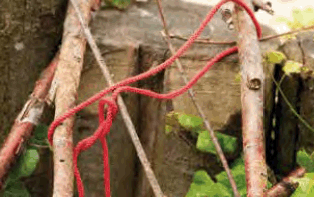
Section 1.12
Parents and local residents concerns
Inevitably whenever there is change there will be concerns raised, because people
are used to the way ‘it has always been’. Schools can address concerns by keeping local residents and parents informed and involved: by engaging with them from
the earliest stage to encourage a sense of shared ownership. Those living close to the school are in an ideal situation to help keep an eye on a valuable community resource; one which they and their own children
may use or have used in the past.
Parental concerns about children’s safety when they are out playing and apprehension about accidents are common anxieties identified by schools. Involving and informing parents about why opportunities for play are being extended, how it is being done, and why will help alleviate these fears. Sometimes, parents feel that ‘the school’ will see them as ‘bad’ parents if they do not express a concern on such issues.
As a society we are increasingly hearing about and recognising the concept of ‘lost childhood’. More and more parents whilst realising that their children need to play, get dirty and take risks often find it challenging to provide these opportunities. Many will be looking towards the school community to support them to respond to this challenge. Providing the right information for parents and the wider community will support them to understand why this provision is important.
Contact
Email: Deborah Gallagher
There is a problem
Thanks for your feedback